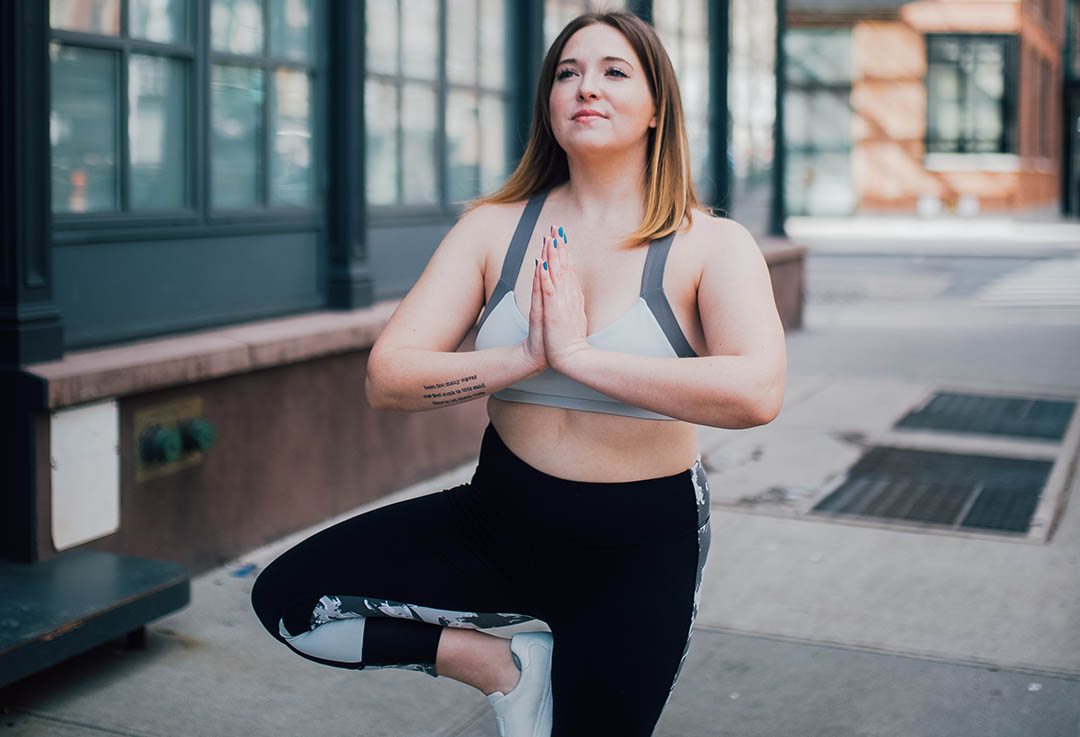
Here’s a fun fact about me: I’ve never broken a single bone in my body. In fact, other than a couple minor concussions in my high school years, I had never sustained an injury that seriously limited my physical ability. That is until last year, when my husband and I were hiking upstate.
It had rained the day before, so things were muddy. He went up ahead to check if we were on the right trail, and I mindlessly stepped into a slick spot on a hill, and down I went, sliding on my knees until one of them slammed into a rock. I was able to walk, and didn’t want to be overly dramatic about it (and probably didn’t really want to admit to myself I was actually hurt), so I finished the hike, and by that time, my leg was very swollen and hurt a lot. Turned out it was a pretty nasty bone bruise on the very top of my tibia, a place that gets a lot of impact from daily activity.
Bone bruises sound harmless, but they’re actually small fractures in the bone at the spot of impact. Being someone who works out and runs regularly, not being able to do what I wanted physically really got to me. But it also taught me a lot. My hope in writing this post is that, if you’re in a position right now of getting over a physical injury, to show you that there’s light at the end of that tunnel. And that your injury can help you grow as a person. I’m not claiming to be an expert. This is just my personal experience, and I hope it’s helpful to you! Here’s what I’ve learned from my injury:
The doctor may not be able to help. But you should still go.
Unless you’re seeing a top-notch doctor in sports medicine for athletes, it’s highly likely that your doctor won’t have any magical cures. Obviously you should still go to the doctor, especially if you’ve got a bone sticking out of your leg or something, but they may not even be able to pinpoint exactly what the problem is. The most common thing doctors will tell you is to rest, ice and elevate. This was something that frustrated me because I wanted to be diagnosed with something and have a cure given to me right away. It’s just not the way it works. It’s not a sinus infection.
Rest now means activity later…
My first instinct after hurting my knee was to push myself. The thought of not being able to work out scared the shit out of me. It was something I did almost daily. It was a part of me, and a good part of what kept me sane, especially running. I thought I could just pretend it wasn’t there. I guess I was in denial? But I had to really take a step back and think of the big picture here. Yes, I could get a run in or work out today, but if it’s making the injury worse, I’m not going to be able to do any of those things at all down the road. I had to find other ways to release pent up energy and stress, like meditation and singing.
But you don’t have to completely stop being active
Before I got injured I was running a lot and doing HIIT activities that involved a good amount of jumping/leg work. I couldn’t do any of those things after falling, and in my mind I was like, “Why even work out at all if I can’t do those things?”. But the trainer I see once a month (more on that below) helped show me ways to modify my workouts to still get a sweat in without putting pressure on my knee. We focused on upper body and core strength during this time. My arms were never so toned! LOL
A trainer or massage therapist may just become your best friend
After about six months into my injury journey, I was still experiencing pressure in my knee at the most random times. It wasn’t necessarily after working out or being on my feet a lot. It would just pop up out of nowhere for days at a time. Coincidentally, that’s when Rich and I went to Vermont and came across that super affordable treehouse massage place. My intention was to just get a relaxing full-body massage, but when the therapist (a lovely woman named Jammie) got to my leg, she noticed a huge knot in the muscle of my calf. She worked on this spot for a good while, and afterward, my knee felt so much freer.
When I saw my trainer after this and told him about it, he assessed my calf muscle and found a few more areas where there were knots. He showed me some techniques to massage those areas with a therapy ball, and after regularly doing those daily, I was able to get back to my normal routine!
You may have to spend more time caring for your body
As I mentioned above, I spend a good amount time before and after workouts massaging the muscles that get tight and pull on my knee. I also stretch and warm up religiously. Is it annoying that I can’t just hit the sidewalk or gym without a 15-20 minute stretching/warm up session? Yeah. But if it means I can do the things I want to do physically, I’m all for it. The world isn’t full of instant gratification, right? I think the biggest lesson here is to cherish your body, love it, and take care of it, because you only get one.

LEAVE A COMMENT